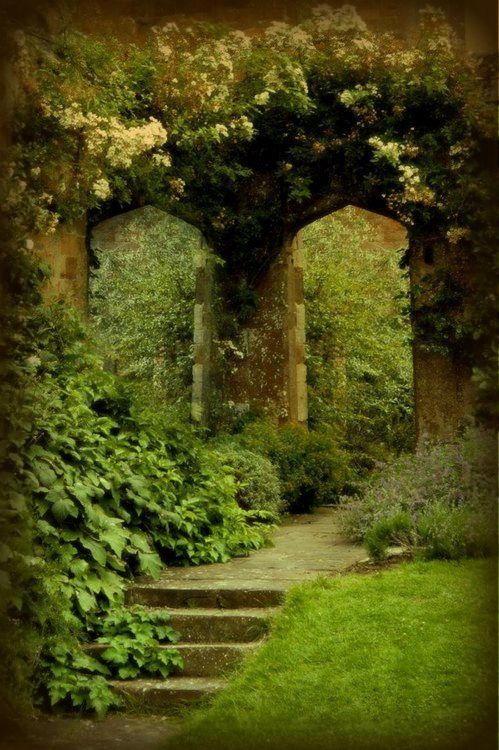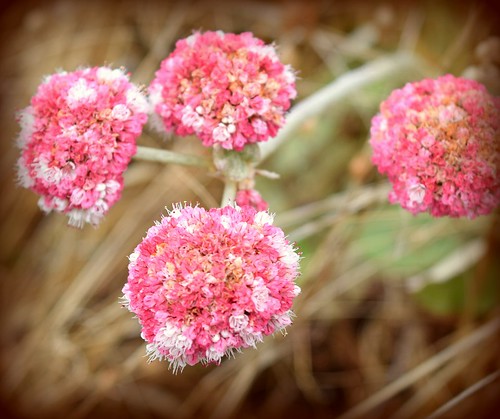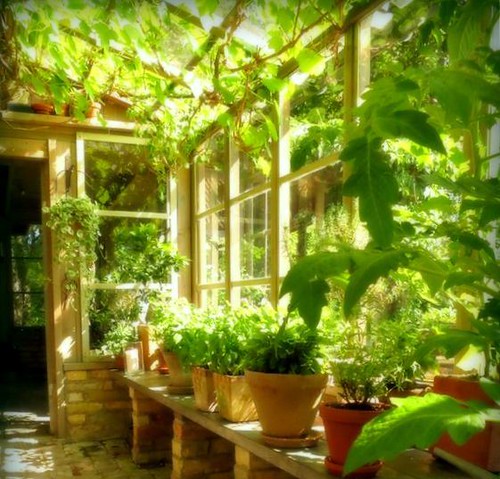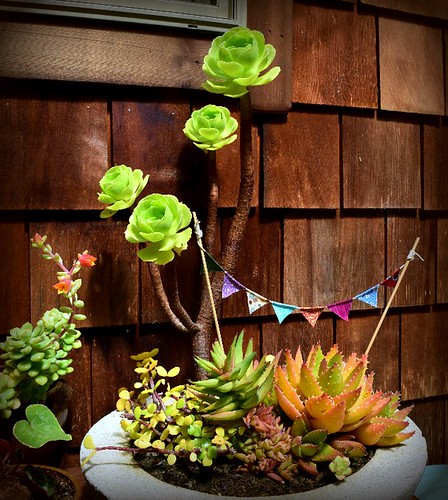FEATURES|COLUMNS|Creativity and Contemplation
My Grandmother’s Greenhouse and Other Portals to Wonder
During a Hakomi* session some years ago, my lama Yeshe Wangmo asked me, “What would be a nourishing statement for you?” In this therapeutic context, dialogue is aimed at revealing uneasy body-mind patterns, allowing avenues for newly embodied states of mind to open. What nourishes? Healing is so critical in our current world at every level, from micro to macro. Whether a middle manager working 75 hours per week in a windowless office, or a newly arrived refugee in a strange and perhaps unwelcoming land, we are all greatly in need of nourishment. A return to wonder is restorative, rediscovering on the subtlest levels a portal back to our childlike sense of awe, openness, and enchantment. But how do we return to this neglected state?
I recently confided to a friend that the plants have been speaking to me. (She assumed I meant the entheogen ayahuasca, though I don’t partake.) No, I told her: all of them. Most likely they haven’t just begun; I’ve simply started listening again. They call to me in their own languages—color, shape, texture, movement, flavor, sound, scent. I have roots in a matrilineal thread of horticulturalists, but this feels deeper, more primal. What is it about plants that captivates me so? From them we derive oxygen, medicines, foods, beverages, shelter, fabric, fuel, paper, not to mention beauty, joy, stress-relief, connection, inspiration, context, and refuge. But the dominant mindset of what “they” give to “us” is not a sustainable one. As Pope Francis wrote in his 2015 Encyclical to all the people of the world, Laudato Si’, we are responsible for conserving Mother Earth, to see deeper meaning in our natural environment “than what serves for immediate use and consumption.”**
Like earlier societies, indigenous peoples and traditionalists among us retain a healthy interdependence and symbiotic connection with the natural world. Certain cultures, such as the Maori, even view the environment as a sentient network of beings that also encompasses rivers, trees, mountains, and rocks.
In his history of herbal lore, biodynamic ethnobotanist Wolf Storl conveys Medieval abbess and healer Hildegard von Bingen’s perspective on the plant kingdom (referred to by Storl as kindom):
“Hildegard praises the ever-renewing, life-giving, healing power of vegetation. This power, which she calls viriditas, is found in all plants; in the traditional worts [roots] and herbs of the wise woman as well as in the classical and biblical herbs . . . she did not condemn the indigenous plants, she did not bedevil the body and its functions. . . . Hers was a vision of the heart, a cosmological vision of the wholeness (“holy-ness”) of being.” (Storl 2012, 21)
Viriditas, the life force within all creation, is naturally present in humans too. Children are aware in this realm. Healthy children live and breathe magic, invention, and creativity. Ideally, young children (those aged 6 and under) are continually imagining in a multilayered stream of perceptions; a fully dimensional web of the senses; inclusive of feeling and relationship with outer and inner, in a fluid, organic integration. Before exposure to harsher realities, the young child is immersed in numinous realms, conversing with gnomes and fairies. They are characters in their own fantasies and easily play and dream without needing to delineate the “real” from the “unreal.” A major benefit of being a teacher, parent, aunt, or uncle, is having this imagination rekindled in us. Reawaken magic and we drink of its deep nourishment. Watching our young ones play in nature, we marvel at how easily they strike up fantasies with new friends, both seen and unseen.
Yet this terrain of curiosity and wonderment is accessible to all. Sometimes meditation retreats are seen as an act of renunciation, abandonment, or even running away (from society, or one’s problems, etc.) rather than as movement toward something. More deeply, retreat is a return—to one’s true nature and authentic place in relationship with the environment and all things, via immersion in the life force of the body, sounding, visualizing, pure being. Environment means both inner world, outer landscape, and the interconnectivity of the two. It is a return to magic, both cultivated and self-arising.
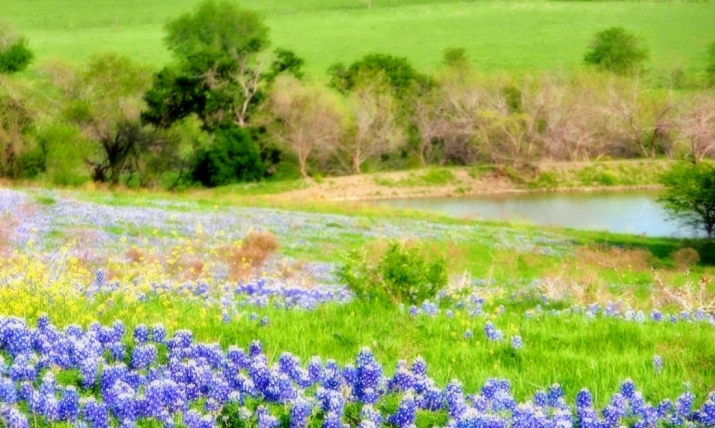 Renewal © Botanic Bleu 2016
Renewal © Botanic Bleu 2016I keenly remember a favorite childhood meadow, forest-encircled, the humid silence saturated with the clicketing hum of crickets, a sense of stillness in which anything was possible. Safe in the dense, sunny, wild-flowered expanse, with an array of animal and insect life, or beneath the night-blanketing sky, I felt at home in my surroundings, much more so than enclosed in a house filled with human company. As adults we seek a return to nature’s embrace—our birthright and heritage:
“Go to a wide-open space. Gaze without looking anywhere. The mind stops its building of thoughts, and rests on its own foundation—Immensity. The light that you see by is the light that comes from inside.” (Roche 2014, 72)
This light has never not been with us, but we forget what it was like before adult stress and strategizing. We think and think and overthink the thinking until we are exhausted and resort to distractions and substances to calm the mind. We forget how to climb in branches, dig in the dirt for treasure, braid morning-glory crowns, how to sense and revel in our own light, in full sun, breathing deeply for the sheer pleasure of inhaling oxygen, gift of the verdant sphere. Artists and musicians, designers, naturalists, and healers who inspire remind us how our original light nature is the juicy sustenance of our lives—the key to reconnection with all life; animal, vegetable, mineral, ourselves, one another, and invisible marvels. Without reactivating awe and wonder, how can we find our way back to our own heart, to the pulsing, delicate, dreamlike interconnections occurring in every moment, to the healing so direly needed everywhere? Portals to wonderment are always accessible, in the simplest of intimacies with nature. Poet Mary Oliver entreats us, “You only have to let the soft animal of your body love what it loves.”*** And let one’s heart remember what it has known, from beginningless time.
My grandmother’s greenhouse in San Antonio was a mysterious, moist paradise of ferny fronds, showy orchids, and dense mosses engulfing the limestone pathways. My mother recalled, “For years a frog lived somewhere hidden in the greenhouse, somewhere under cover of red and green begonia leaves, and would begin to croak as evening came on. During night-times, its voice would carry through my bedroom.”**** Trees, animals, insects, herbs, and flowers comprise both palette and canvas for our spatial, visceral experiences as human creatures in connection. My friend Helene delights in taking meticulous care of a succulent fairyland she keeps in her cabin and porch. The tenderness with which she cultivates the young plants parallels that of a mother for her offspring, nurturing and cherishing, devoted. It is an entire miniature world she has created, overlaid on the familiar one we inhabit.
Whether a woodland meadow, humid hothouse, secret cave, or treehouse hideaway, our childlike hearts seek a return to a place of joyful wonder in, and creative attunement with, our environment. This mutually nurturing experience is the foundation of health and the creation of dual benefit—self and other—for which there is no time left to decide which must come first. Two together, united, as bee to blackberry bush, trumpet flower to hummingbird, as the length of one’s body held in the sun-warmed grassy hollow of a hillside. We are not separate, and must expunge that hubris that believes we are so. Portals to wonderment abound, one must only crave to find them, and doors sway open:
“Anything that has ever pleased your heart can be your guide. All that you adore, all that is nourishing to the heart, all that has ever made you feel like you are drinking the sweet honey nectar of life, is always here in your heart. Come rest in this splendor.” (Roche 2014, 224)
Viriditas is whispering to me, and I will do her the honor of deeply listening. May the wonder, rest, and enchantment we discover for ourselves radiate out to all beings and environs as nourishing medicine.
This article is dedicated to my teacher Lama Tsédrup Tharchin Rinpoche, on the third anniversary of his Parinirvana, and to all six of my grandparents.
* Hakomi Method is a form of mindfulness-centered somatic psychotherapy developed in the 1970s by psychologist Ron Kurtz, founder of the Hakomi Institute.
*** http://www.rjgeib.com/thoughts/geese/geese.html
**** Private correspondence, Lindy Beasley, 16 August 2016.
References
Storl, Wolf D. 2012. The Herbal Lore of Wise Women and Wortcunners: The Healing Power of Medicinal Plants. Berkeley, CA: North Atlantic Books.
Roche, Lorin. 2014. The Radiance Sutras. Boulder CO: Sounds True.
Related
Tale of Three Whales: Life after Long Retreat (Buddhistdoor Global)
Meditation as Sustenance for Death and Dying (Buddhistdoor Global)
A Vajrayana Buddhist practitioner since 2000, Sarah C. Beasley (Sera Kunzang Lhamo) spent more than six years in retreat under the guidance of Lama Tharchin Rinpoche and Thinley Norbu Rinpoche. She is an experienced teacher, writer, sculptor, photographer, dancer, and Iyengar yoga practitioner. Sarah offers a workshop, “Meditations for Death, Dying & Living,” based on the text Vajrasattva Ceremony for the Dead (Concise Nay Dren). For more information, email seraklhamo@yahoo.com
Special thanks to Emily Liolin, Helene Rein, Andrea Traber, and Kenny Saint-Cyr
See more
Moondrop Meditation (workshops with Sarah C. Beasley)

